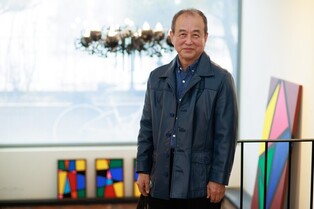*Editor’s note: K-Odyssey introduces travel journals by alumni of Yonhap News Agency Travel Academy, provided in Korean and English. The original Korean article precedes the English translation.
*편집자 주: K-Odyssey는 연합뉴스 <여행자학교> 수료생들의 여행기를 한국어와 영어로 소개합니다. 한국어 원문을 먼저 게재한 뒤 외국 독자들을 위해 영어 번역본도 함께 싣습니다.
[남산에서 찾은 소나무]
조남경 (여행자학교 1기)
‘남산 위에 저 소나무 철갑을 두른 듯~’
한국인이라면 누구나 부를 수 있는 애국가 한 소절이다.
남산은 서울 사람들에게 더 없이 친숙한 자연이다. 그런데 그곳에서 소나무를 본 기억이 있는 지 묻고 싶다.
서울 용산에서 나고 자란 내게 남산은 초등학교 시절부터 거의 매년 소풍 장소였었고, 30여 년 동안 을지로에서 직장생활을 했기 때문에 바로 위 남산에 대해선 모르는 게 없다고 생각했다.
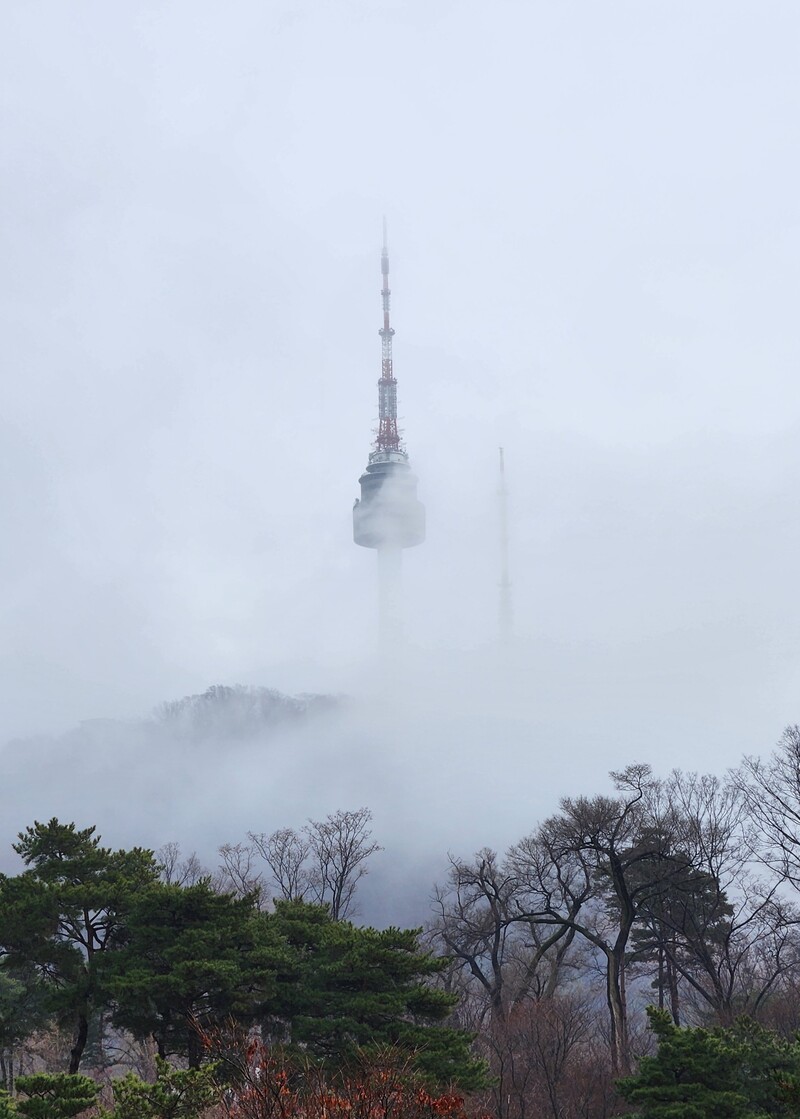 |
| ▲ 안개 낀 남산타워. |
남산은 화려한 봄 벚꽃과 처연한 가을 단풍으로, 또 아름다운 남산 순환 산책길과 남산타워, 케이블카 정도만 떠오를 뿐이었다.
‘남산 위의 저 소나무’를 찾아 봄나들이 여정에 나섰다.
숭례문을 뒤로 하고 경사진 길을 오르면 한가로운 비둘기들이 맞아주는 남산공원에 이른다. 삼국통일의 주역 김유신장군의 말 타는 동상은 유럽 대도시 여행에서나 봄 직한 광경이어서 생소하지만, 멋지기도 하다.
성벽과 돌계단을 따라 올라가다 보면 아래로 펼쳐진 풍경을 보고 싶은 마음에 자꾸만 뒤돌아보게 된다. 마침 미세먼지가 물러간 쾌청한 날이어서 멀리 여의도, 북한산 등 천만 인구 메가시티 서울이 거의 다 보이는 듯했다.
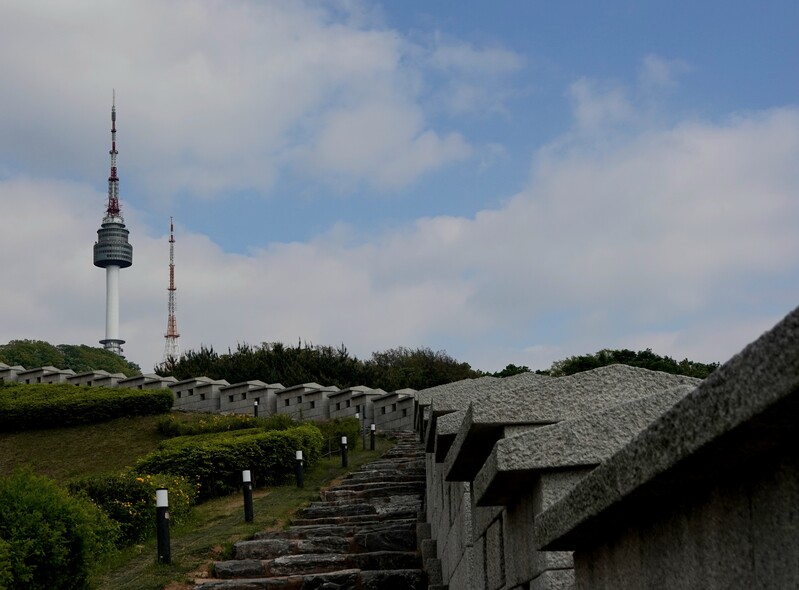 |
| ▲ 남산공원에서 보이는 남산타워. |
중턱 즈음 올라가니 너른 평지에 조경이 멋진 백범광장이 펼쳐지고 광장 한 편에는 ‘어진 사람들이 좋아한다’는 의미의 전통 한옥, 호현당이 자리 잡고 있었다.
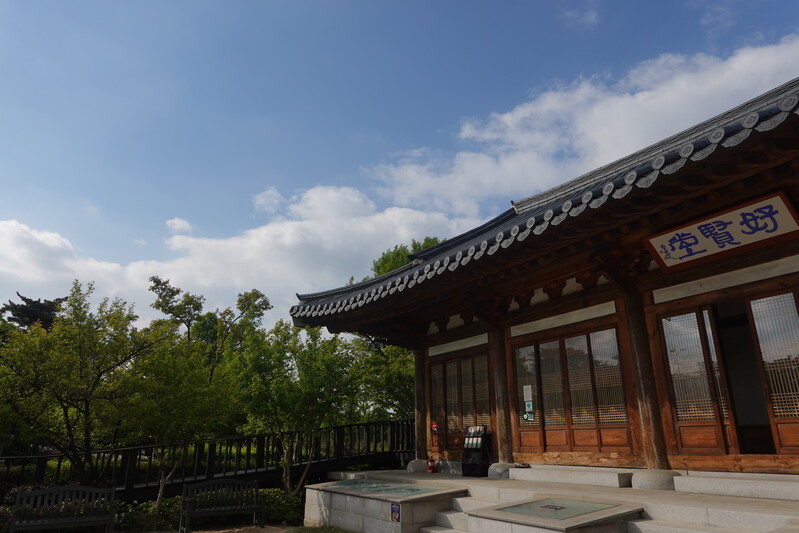 |
| ▲ 호현당. |
이곳에서는 사전 예약한 일반시민과 외국인에게 한국의 예절과 차 문화를 배울 수 있는 기회를 제공한다.
안중근의사 기념관을 지나 가파른 길을 조금 더 올라가면 남산의 상징인 남산타워에 도착한다.
올라가는 길에 많은 외국인을 만났다. 코로나가 지나가고 정상화되고 있는 것일까? 궁금한 건 외국인이 어떻게 이 길을 알고 올라가는 지였다. 몇몇한테 물어보니 케이블카 대기시간이 너무 길어 차라리 걷기를 선택했다고 한다.
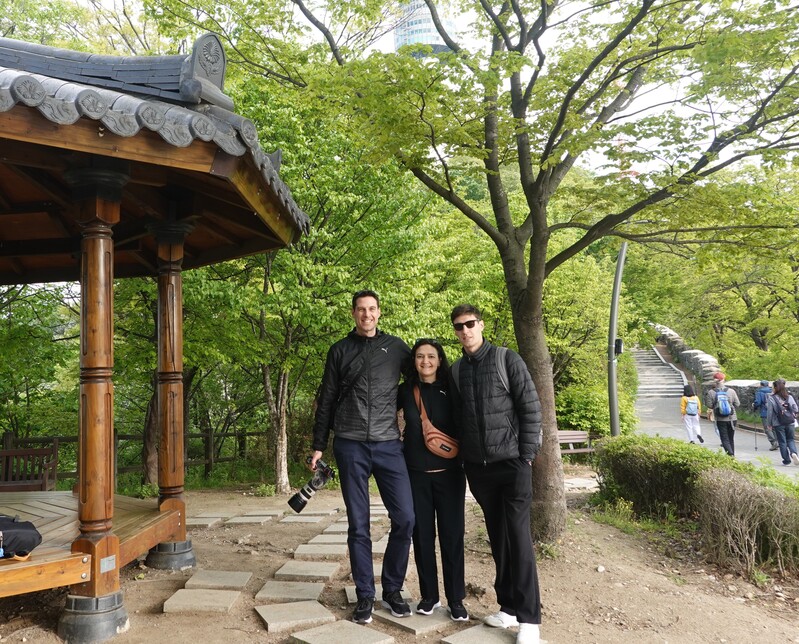 |
| ▲ 타워 오르는 길에 만난 독일 관광객 가족. |
풍경도 즐기고, 역사도 공부하고, 보너스로 운동까지 되니 금상첨화 아니겠는가? 질문에 적극적으로 대답해준 외국인들에게 지금 본 풍경이 아름다웠다면, 서울의 일몰과 야경, 붉고 푸른빛으로 번갈아 빛나는 남산타워는 밤에 훨씬 더 아름다울 것이라고 말해주는 걸 잊지 않았다.
이제 우리 민족이 가장 아끼고 신성시하는 소나무를 본격적으로 찾으러 갈 참이다.
소나무는 우리나라 산에 가장 많이 심어진 수종으로, 예로부터 불로장생을 상징하는 십장생에도 포함됐고, 김홍도의 ‘선인송하취생도’, 김정희의 ‘세한도’, 정선의 ‘노송영지도’ 등의 회화에서 알 수 있듯이 선비와 화가들의 단골 소재였다.
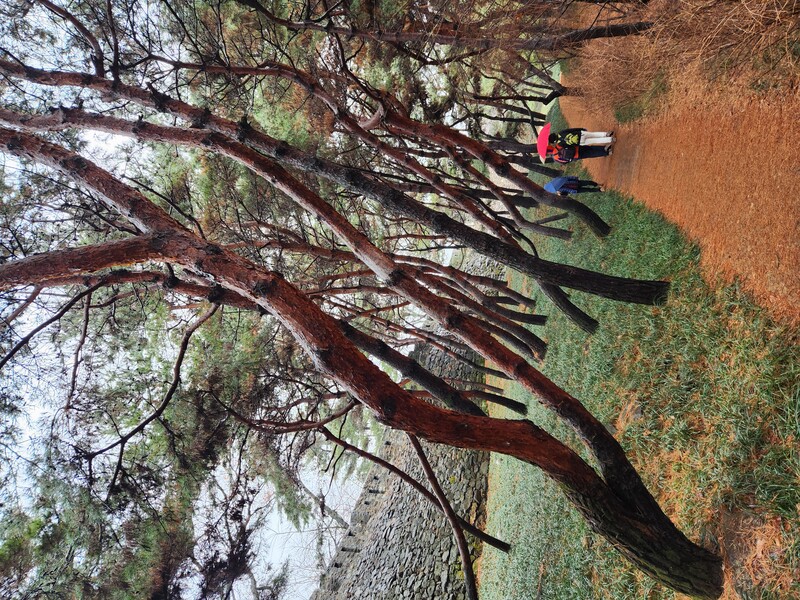 |
| ▲ 남산 소나무림. |
서민들의 정서를 드러낸 이름 없는 화가들의 그림, 민화에서도 소나무는 빠지지 않았다.
경북 울진 금강송 원시림과 같은 모습을 기대하며 남산 소나무림을 찾았다. 그런데 나무들이 앙상한 게 수령이 그리 오래돼 보이지 않았다.
왜일까? 구한말 땔감으로 무분별하게 벌목한 뒤 새로 심지 않았고 일제 강점기 때는 우리가 아카시아나무로 알고 있는 ‘아까시 나무’를 대대적으로 심었기 때문이다. 토종 소나무는 남산에서 거의 자취를 감추었다고 한다.
한국전쟁을 겪으며 더욱 황폐화된 남산은 1990년 시작된 ‘남산 제모습 찾기’ 사업 추진으로 현재의 모습을 갖추게 됐다. 2021년부터는 남산 소나무림이 국가산림문화자산으로 지정돼 잘 보존되고 있다. 수십 년, 수백 년 울창하기를 빈다.
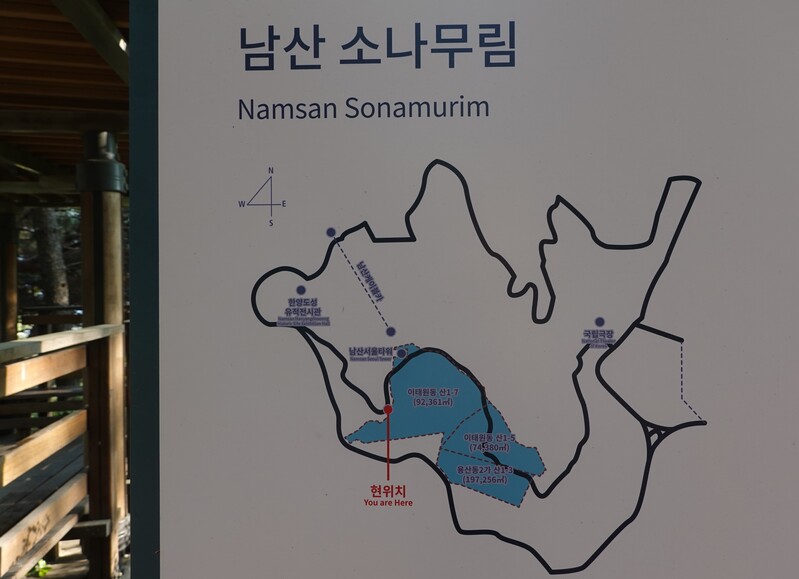 |
| ▲ 소나무림 안내도. |
남산 둘레길 중 소나무가 집중적으로 늘어선 길은 의외로 사람들의 발걸음이 적었다. 한적할수록 소나무는 외로워 보였고, 반대로 굳세 보이기도 했다.
소나무를 뒤로하고 내려오는 길엔 마음 한 편이 아련해지며 자꾸 소나무들을 뒤돌아보게 된다. ‘한반도의 굴곡진 역사는 사람에게만 영향을 미친 게 아니었구나!’ 라는 생각이 들었다.
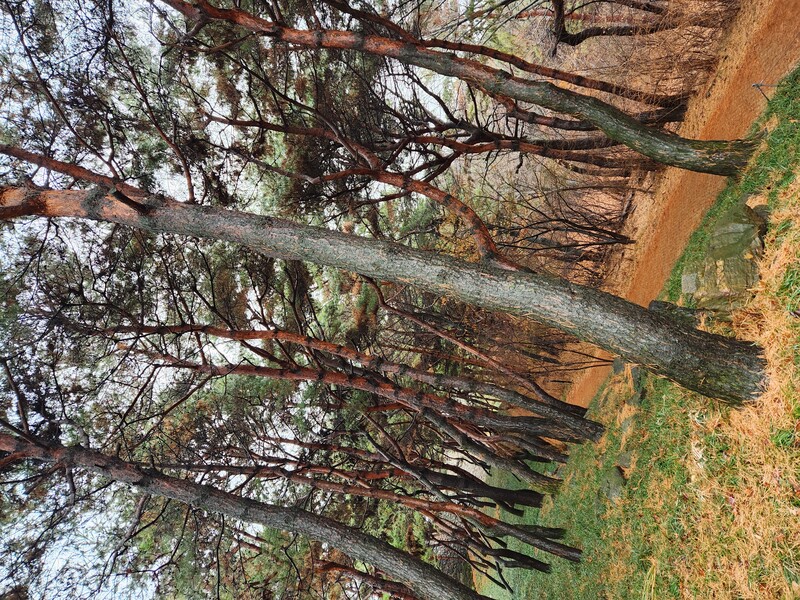 |
| ▲ 남산 소나무림. |
남산타워를 오가는 남산공원 순환로는 일반차량 운행금지로 걷는 길로도 그만이다. 울창한 수목 사이로 군데군데 보이는 서울 도시 풍경은 국제적인 관광도시 홍콩의 빅토리아피크 둘레길과 견주어도 손색이 없다고 생각한다.
다 알다시피 처음에 노래한 애국가 2절은 이렇게 이어진다. ‘바람서리 불변함은 우리 기상일세’
또 앞서 예시한 ‘세한도’에는 논어의 한 구절이 적혀 있다. ‘한겨울 추운 날씨가 되어서야 소나무, 측백나무가 시들지 않음을 비로소 알 수 있다’(歲寒然後知 松栢之後凋)
김정희가 굳이 논어에서 이 글귀를 옮겨온 것은 우리 민족 내부에 내재한 소나무의 기상을 감지해서였을 것이다.
소나무는 우리의 민족혼이 서린 친구며 스승이며, 나아가 삶의 한 부분이다.
Pine Trees Found in Namsan Mountain
“Like a sturdy armor on the pine tree atop Namsan…” This is a verse
from the national anthem that every Korean can sing.
Mount Namsan is an incredibly familiar natural landmark to the people
of Seoul. But I want to ask if anyone remembers seeing the pine tree there. As
someone who was born and raised in Yongsan, Seoul, Namsan was a frequent
destination for school picnics during my elementary school years. Having worked
in Euljiro for over 30 years, I thought I knew everything there was to know
about Namsan.
To me, Namsan was associated with vibrant cherry blossoms in spring and
melancholic autumn foliage. I only thought of the beautiful Namsan Walking
Trail, Namsan Tower, and the cable car.
I embarked on a spring outing to find the “pine tree on top of Namsan.”
Upon climbing the steep road, I reached Namsan Park, where peaceful
pigeons greeted me. The statue of General Kim Yu-sin, a key figure in the
unification of the Three Kingdoms, was a sight that I rarely encountered,
reminiscent of a scene one might encounter during a European city trip, both
unfamiliar and magnificent.
As I ascended along the fortress walls and stone steps, I couldn't help
but turn back, wanting to see the landscape unfolding below. On that clear day,
with the fine dust cleared away, it felt like I could see the entirety of
Seoul, a megacity with a population of tens of millions, including Yeouido and Mount
Bukhansan.
As I climbed further, I reached the spacious Baekbeom Square, with its
beautiful landscaping. On one side of the square stood the traditional Hanok
building called Hohyeondang, meaning “a place loved by wise people.”
Here, they provide an opportunity for pre-booked general citizens and
foreigners to learn about Korean etiquette and tea culture.
Passing by the Ahn Jung-geun Memorial Hall and climbing a steep path, I
finally arrived at Namsan's iconic landmark, Namsan Tower.
On the way up, I encountered many foreigners. Could it be that the
situation with COVID-19 is improving and returning to normal? I was curious how
these foreigners knew about and climbed this path. When I asked a few of them,
they said that the waiting time for the cable car was too long, so they decided
to walk instead.
Enjoying the scenery, learning about history, and getting exercise as a
bonus -- what more could one ask for? I didn't forget to tell those foreigners
who actively answered my questions that if they found the current view
beautiful, they should remember that Seoul's sunset, night view, and Namsan
Tower shining in red and blue lights alternately would be even more
breathtaking at night.
Now, it is time to truly search for the pine tree that our nation holds
most dear and sacred.
The pine tree is the most widely planted species in the mountains of
Korea. It has been included in the symbolic Ten Longevity Symbols, representing
immortality, and as seen in paintings such as Kim Hongdo's “Seoninsonghachwisaengdo,”
Kim Jung-hee's “Sehando,' and Jung Sun's “Nosongyeongjido,” it has been a
recurring motif for scholars and artists.
The pine tree has also found its place in folk paintings, revealing the
emotions of ordinary people through the works of nameless artists.
With the expectation of seeing a scene similar to Gyeonggang Pine
Forest in Uljin, Gyeongbuk, I sought out Namsan Pine Forest. However, the trees
appeared somewhat stunted, as if they hadn't been around for a long time.
Why is that? It is because during the late Joseon Dynasty,
indiscriminate logging took place, and no reforestation efforts were made.
During the Japanese colonial era, a tree called "Akashi," which we
now know as Acacia, was extensively planted. As a result, native pine trees
almost disappeared from Mount Namsan.
The mountain, which experienced further devastation during the Korean
War, has been restored to its present state through the "Rediscover
Namsan" project initiated in 1990. Since 2021, Namsan Pine Forest has been
designated as a national forest cultural asset and is being well-preserved. It
stands tall for decades, even centuries.
Surprisingly, the paths lined with pine trees along the trails around
Namsan have fewer footsteps than expected. The quieter it gets, the lonelier
the pine trees appear, yet they also exude strength and resilience.
As I descend, leaving the pine trees behind, my heart becomes somewhat
nostalgic, and I find myself turning back to look at the pine trees again. It
makes me realize that the complex history of the Korean Peninsula has not only
influenced people but also nature.
The walking path around Namsan, traversed by those visiting Namsan
Tower, is closed to general vehicles and is only accessible on foot. Amidst the
dense trees, glimpses of the Seoul cityscape can be seen, which, I believe, can
rival the Victoria Peak Walkway in Hong Kong, an internationally renowned
tourist city.
As we all know, the second verse of our national anthem continues as
follows: "The unchanging spirit of the wind and frost is our eternal
foundation."
Furthermore, the phrase "In the coldest days of winter, we can
finally see that pine and cypress trees do not wither," written in
"Sehando," was borrowed from the Analects. Kim Jeong-hee may have
included this quote to perceive the vitality of pine trees ingrained within our
nation.
Pine trees are not only friends and teachers who embody the spirit of
our nation, but they are also an integral part of our lives.
(This article is translated from Korean to English to Yunhee Cho)
(END)
(C) Yonhap News Agency. All Rights Reserved


















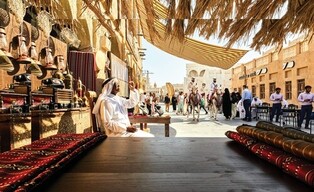




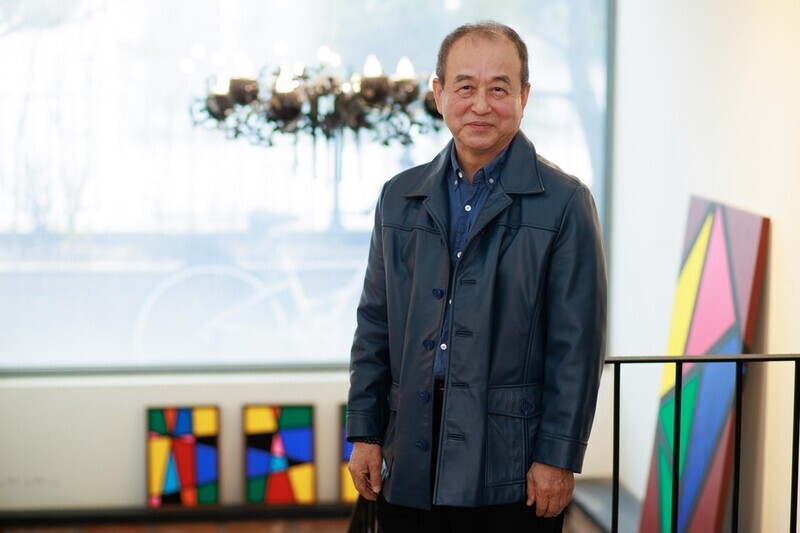

![[가요소식] 보이넥스트도어, 신보로 3연속 밀리언셀러 달성](/news/data/20251025/yna1065624915905018_166_h2.jpg)
